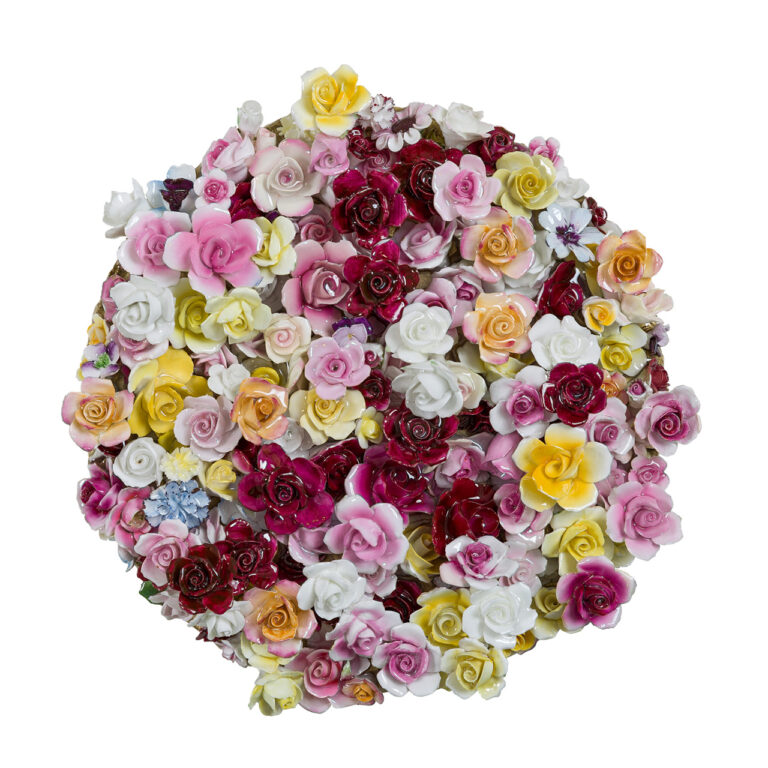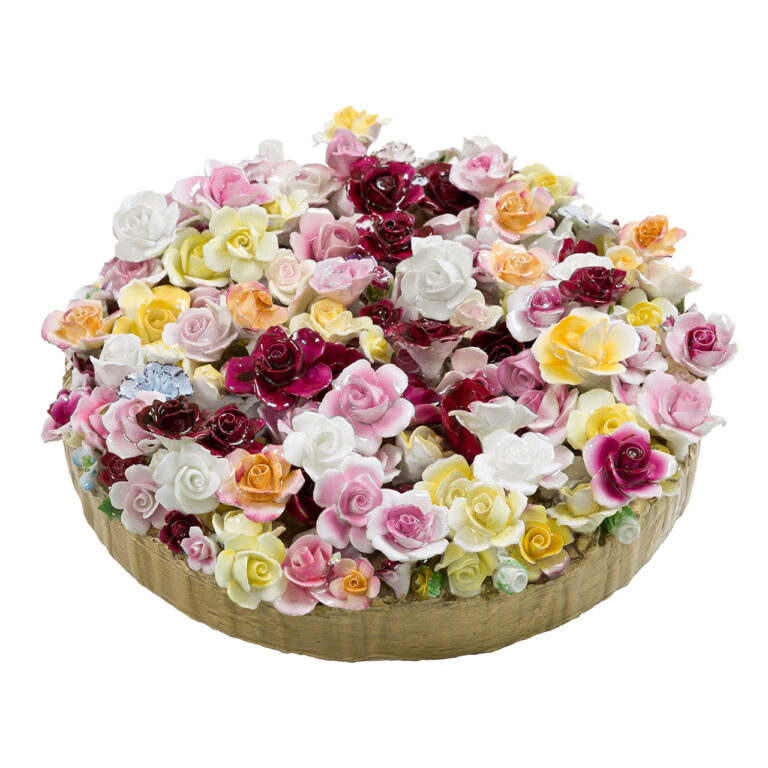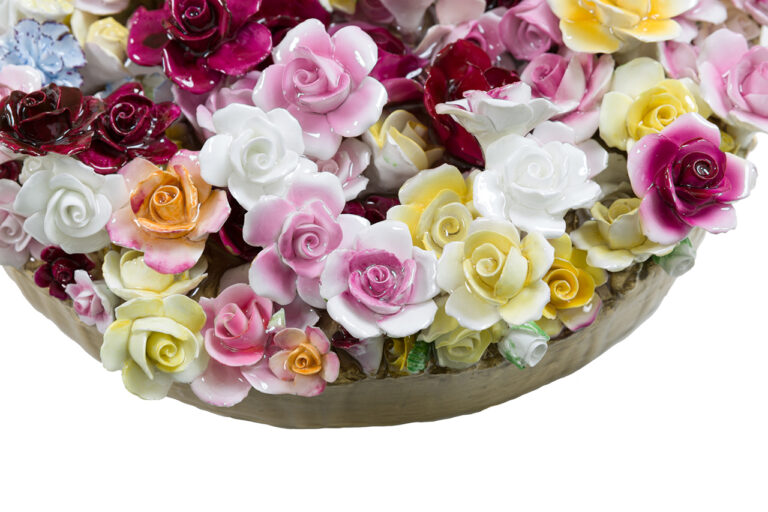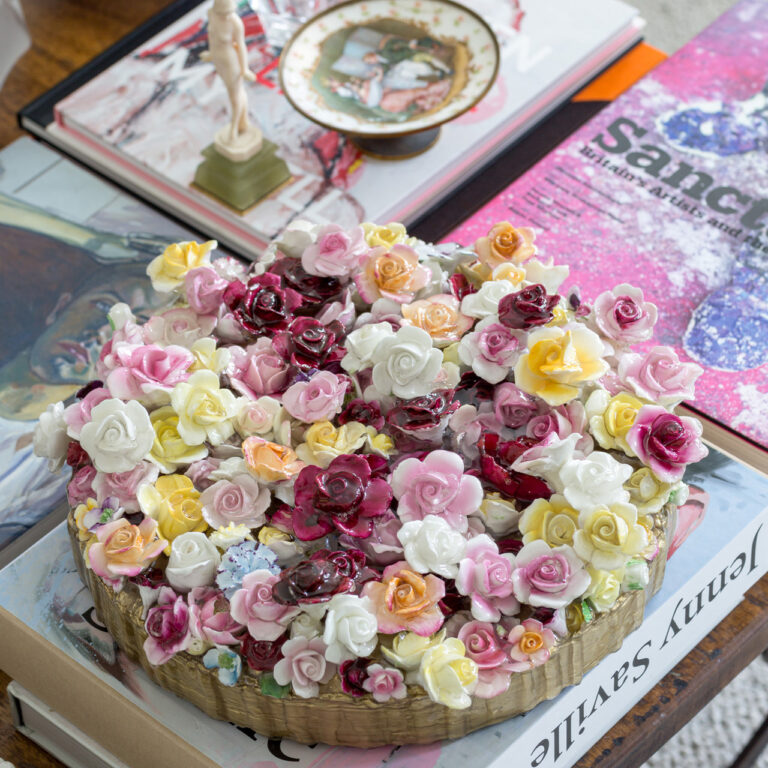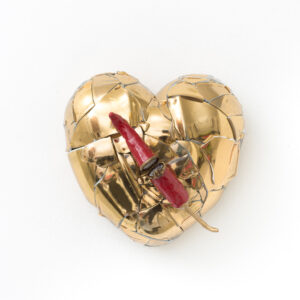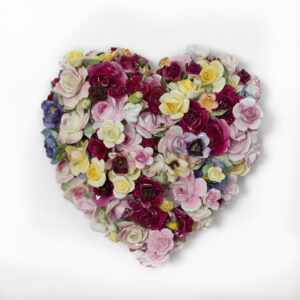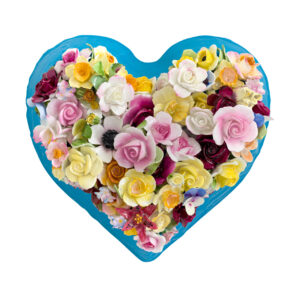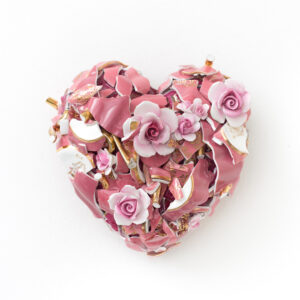"Every act of creation is first an act of destruction." Pablo Picasso
Sandra Shashou’s new body of work, comprising of arrangements of smashed fragments of bone china tea sets, oscillates between modalities of dissolution and reformulation, order and rupture, and historical eras.
Her source material is the bone china produced by Europe’s finest porcelain manufacturers, as the titles of her works indicate – Hamilton, Argyle, Tuscan, Royal Albert, Wedgwood, Limoges, Meito hand-painted and Cobalt – and collected by her from dealers and flea markets. The designs range across centuries and topographies: in one work the lemons and blues of Art Deco, in another the crimson of Edwardian and Victorian designs, and in a third the blue tracery of Chinoiserie.
Shashou brings these tea sets back to her studio and using a small hammer she shatters, punctures, chips and fragments. And yet the shapes of the original crockery are somehow preserved and repurposed in her intricate constructions. The curves of the broken tea sets undulate across simple rectangular surfaces, or swirl around rotundas with a baroque flamboyance. In some the pieces lock tightly together as if part of some giant Cubist puzzle, in other shards seem to be caught in the freeze frame of a constructivist explosion. Her chromatically rich, harmonious works match crimsons, mustard yellows and pinks, or mauve, turquoise and blue. Set in a gold or white ground, Shashou’s fragments unfold like Jackson Pollock’s all-over paintings – only shattered, not splattered.
Shashou has found inspiration in the Japanese art of Kintsugi, in which broken bowls were repaired with beautiful golden joins, so fashionable in the 17th century, that people were accused of deliberately smashing valuable pottery so it could be remade in this manner.
Some may read a social comment in her work, a playful rupturing of bourgeois values. The order and tranquillity of a daily routine, with its echoes of Victorian Britain, Alice in Wonderland and social conformity, tea-time, has been literally shattered.
Shashou herself prefers to foreground the emotional and biographical metaphors embedded in the work. Smashing crockery is, after all, a time-honoured feature of the lovers’ row. “Breakage and fractures are part of the chance and fate of human life, part of our personal history,” she says, "I embrace vulnerability and fragility. In truth that is how we reveal ourselves and really connect.” When Shashou has looked back on love that has disintegrated, and reflected on the times when she has felt ‘shattered’, she has realised that the pieces have rearranged themselves in a new harmonious order. “They fitted together but not they did before."
